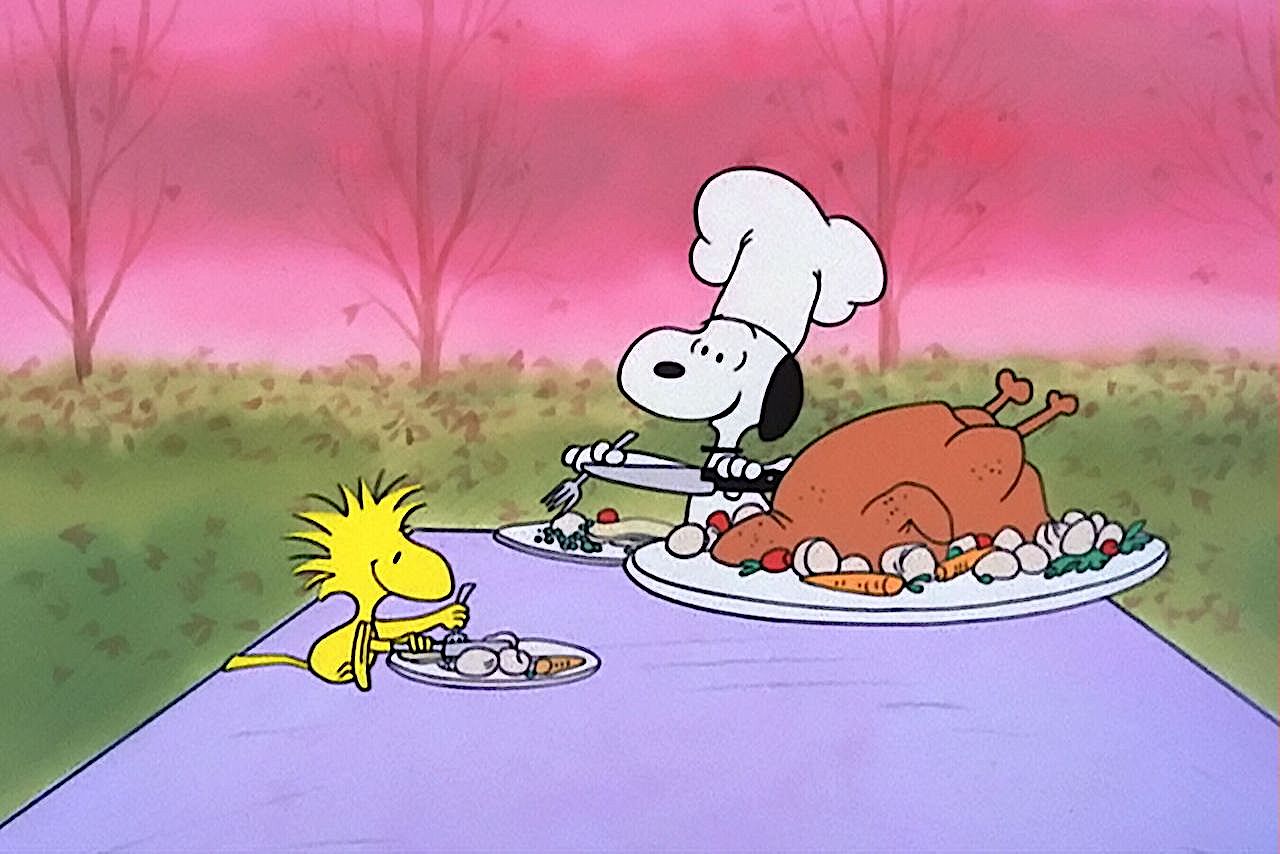IN THIS ISSUE
DINING OUT WITH THE KIDS:
THE RULES
NEW YORK CORNER
LOVE AND PIZZA
CHAPTER THIRTY-FIVE
By John Mariani
NOTES FROM THE WINE CELLAR
By John Mariani
❖❖❖
THE RULES
By John Mariani
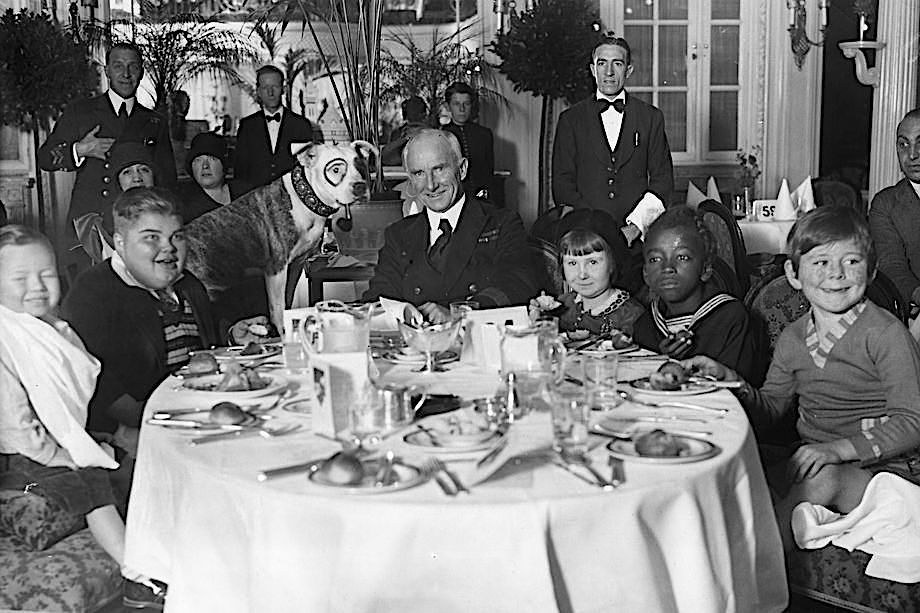
MGM Producer Sam Goldwyn with the cast of the Our Gang comedies
When
my first son was about six months old,
my wife and I thought it perfectly sane to bring
him to Michelin star
restaurants in France by carrying him into the
dining room in a basket. Knowing
the French tolerate dogs better than
they do children in restaurants, I had to swear
he wouldn’t wake up, and my
darling son delivered on the promise. Six months
later I wouldn’t have dreamed
of attempting such a thing.
But as he and my next son grew up, we took
them out to dinner all the time, usually casual
Italian or Mexican or Chinese
eateries where they could escape from the table,
but more than occasionally to
fine dining restaurants where they were expected,
within reason, to behave
well. Fidgeting
was allowed, running
into the sommelier was not.
 I
thought that dining out in deluxe
restaurants was not only a part of their education
but a way to make them love
all kinds of foods.
Since most children
are notoriously finicky when it comes to anything
beyond French fries and pizza
in restaurants, we did what we’d always done in
the casual places: We would
order a couple of things we knew they’d like, and
then a number of dishes new
to them without telling them anything about them.
I
thought that dining out in deluxe
restaurants was not only a part of their education
but a way to make them love
all kinds of foods.
Since most children
are notoriously finicky when it comes to anything
beyond French fries and pizza
in restaurants, we did what we’d always done in
the casual places: We would
order a couple of things we knew they’d like, and
then a number of dishes new
to them without telling them anything about them.
What we found was that the food would come
to the table, look and smell good, and the boys’
senses were titillated enough
for them to ask, “What’s that? Will I hate it?” We
didn’t insist they try the
food but invited them to do so, and, amazingly,
they found that exotica like
frogs’ legs with garlic did taste
a
lot like chicken and pâte de
campagne
was a dead ringer for their mother’s meat loaf.
Once they trusted us they became much
more adventurous—although my older son’s first
taste of an oyster did not go
down well; indeed, it didn’t go down at all.
But they came to love, even crave, things
like Alsatian choucroute
garni (funny frankfurters)
and vitello
tonnato (veal with tuna
sauce), and Dover sole a la meunière
(fish
swimming in butter).
Lavish desserts
were a no brainer, but we never insisted they
finish anything on their plates
as a bribe for dessert. We were
happy
enough that they’d steal the trenette al
pesto and the paella alla
valenciana
from under our knives and forks. They
learned to eat well and they did eat well, which
was why they grew up loving
food as much as we do.
When
they were quite young we would ease them into
better restaurants, and we found that in
Italy there was never a problem with the owners.
At one restaurant in Florence,
the owner’s wife scooped up our two-year-old son
and whisked him away into the
kitchen, not to be seen again until the meal’s
end, when he emerged happily
eating tiramisù, then fell asleep.
French bistros and brasseries are fun,
and resort dining rooms, however posh, are
excellent choices because the kids
invariably want to leave the table and go to the
pool or up to the room. Escape
routes are in fact important: Restaurants with
gardens and patios function
well, and, of course, buffet tables for brunch are
a child’s vision of
gustatory paradise.
Some of other important guidelines:
—
Make sure there is something on the table to
nibble on immediately, like bread
or rolls, and, if not, ask for it the moment you
sit down. Kids are always
starving and don’t want to order
the appetizer before getting bread.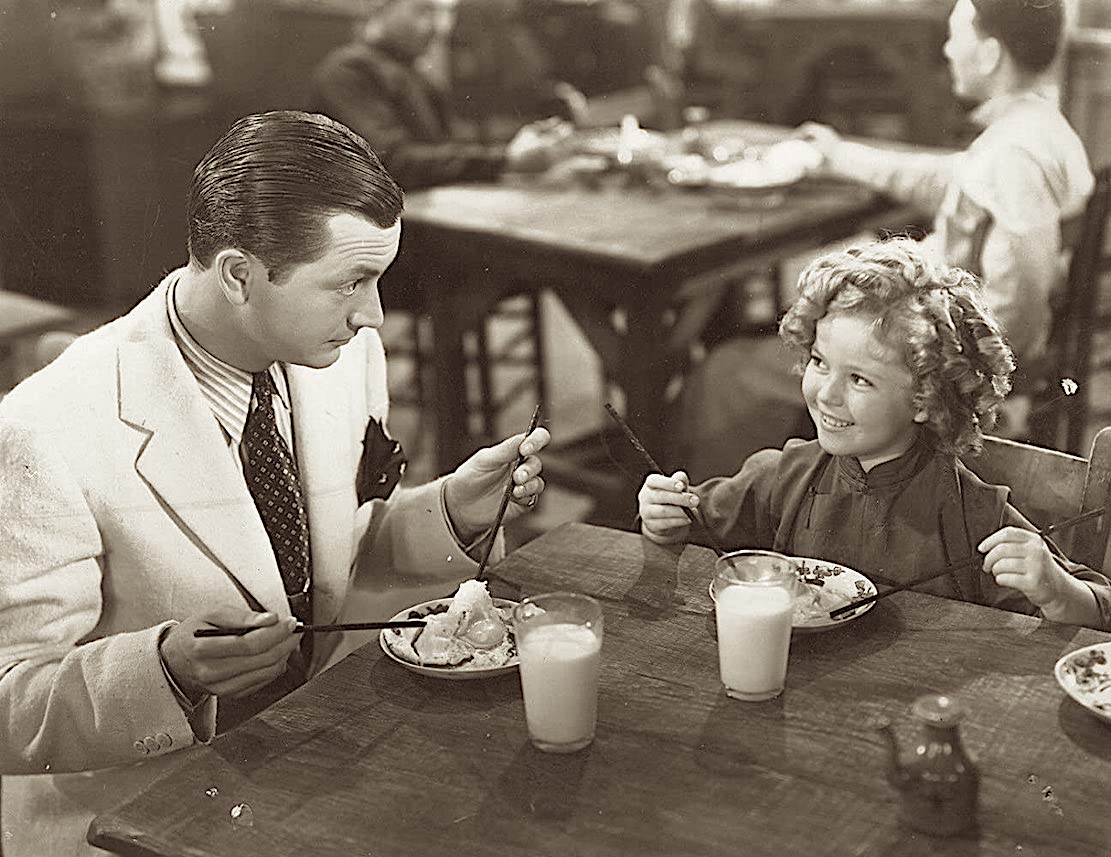
—
Order from the menu quickly after being seated.
—
Keep to three courses.
—
Tell the maître d’ that you’d like to be finished
in 90 minutes to two hours,
max.
—
Don’t allow the children to play with toys or
digital games at the table. (I’m
afraid older children with iPhones will refuse to
go to dinner if they can’t
bring them along.)
—
Choose a restaurant that doesn’t take a long time
to drive to. On the drive home
I always had stories to tell the boys they’d heard
before and wanted to hear
again.
—
I don’t like loud restaurants, but they do drown
out the whining and sibling
battles that inevitably occur.
—
Outdoor restaurants are excellent venues for
family meals, not least at the
seashore. My younger son once got up from the
table on a pier and leapt into
the water to retrieve a little girl who had fallen
in. Proud moment for our
family.

—
Allowing your children to invite their friends
along is very risky business,
because you never know how they will behave and
your children will never try to
educate them.
—
Give your credit card to the waiter at the
beginning of the meal so that there
will be no lag at the end of it waiting for the
bill.
❖❖❖
By John Mariani
LOVE AND PIZZA
Since, for the time being, I am unable to write about or review New York City restaurants, I have decided instead to print a serialized version of my (unpublished) novel Love and Pizza, which takes place in New York and Italy and involves a young, beautiful Bronx woman named Nicola Santini from an Italian family impassioned about food. As the story goes on, Nicola, who is a student at Columbia University, struggles to maintain her roots while seeing a future that could lead her far from them—a future that involves a career and a love affair that would change her life forever. So, while New York’s restaurants remain closed, I will run a chapter of the Love and Pizza each week until the crisis is over. Afterwards I shall be offering the entire book digitally. I hope you like the idea and even more that you will love Nicola, her family and her friends. I’d love to know what you think. Contact me at loveandpizza123@gmail.com
—John Mariani
To read previous chapters go to archive (beginning with March 29, 2020, issue.
LOVE AND PIZZA
Cover Art By Galina Dargery
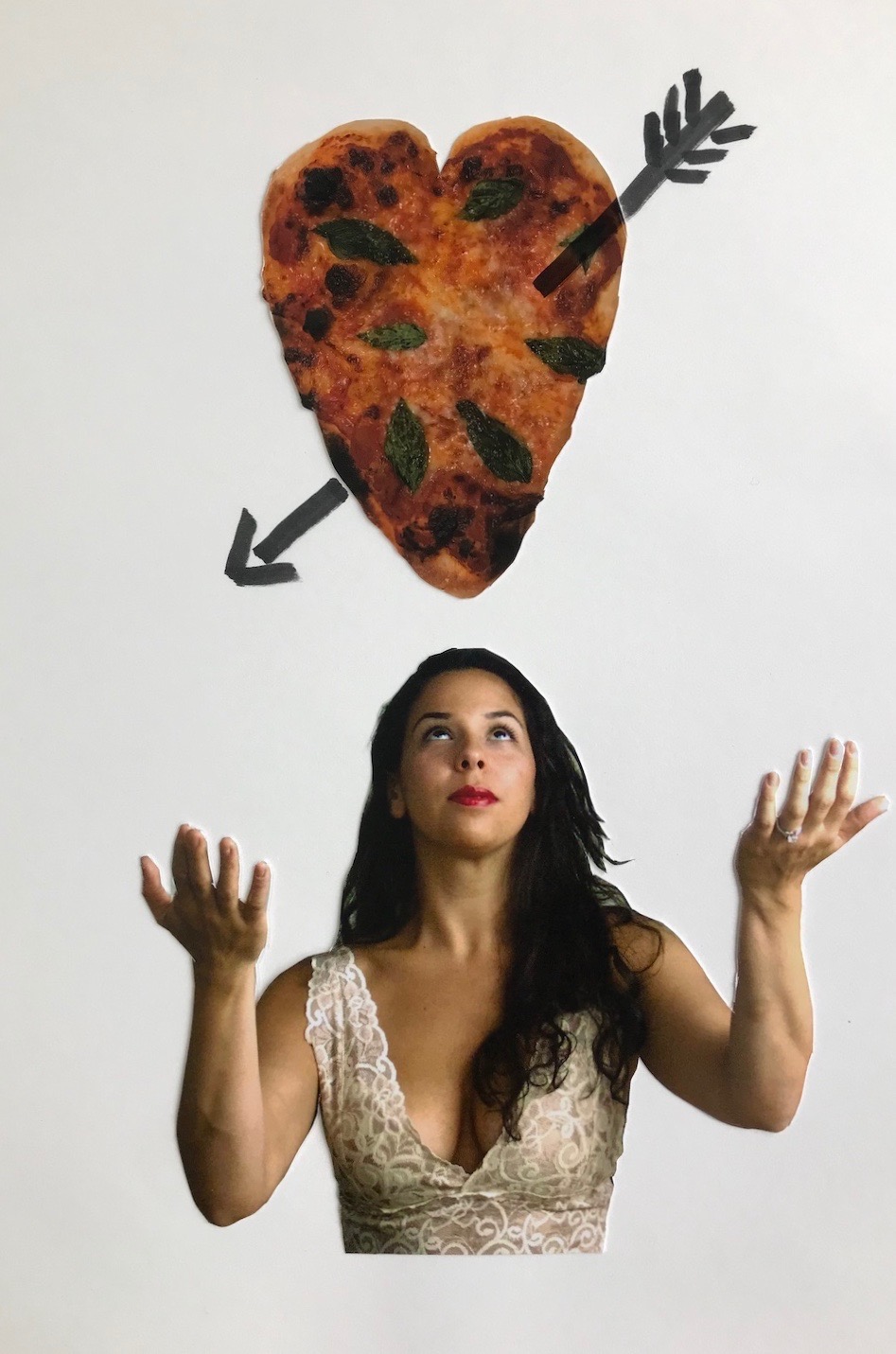
CHAPTER THIRTY-FIVE

Nicola’s summer began more
eventfully for what was happening within her
family than in her own life, and it
helped her focus on what was very real rather
than on pipe dreams.
Roseanne’s belly was
expanding quickly, there were family parties and
baby showers to attend. Nicola
enjoyed walking with her sister down
Arthur Avenue past the shops selling christening
items—the silk and cotton
dresses, the teething rings, the picture
frames—along with wedding gifts,
silverware and china, whose presence in the
windows always caused Roseanne to
nudge Nicola to ask, “So when’s my little sister
going to find a man and settle
down?”
Nicola would sigh and
reply, “Maybe when you stop bugging me about it.
Right now, as you may have
noticed, I’m kind of busy.”
Meanwhile, brother Tony
clinched the deal with Joe Bastone and was
moving ahead with his restaurant
re-design plans, which began with taking down
the ugly old Bella Napoli sign
and completely gutting the interior. New
plumbing, new gas lines, new refrigeration, new
stoves—but he kept the old
pizza oven, believing that the flavor of the
restaurant’s renowned pizzas was
suffused throughout the brickwork.
Then he began working with
Nicola to do the interior design. His
vision was a more dramatic version than what it
had been before.
He wanted shiny black and white surfaces,
including naked tabletops, track lighting and
black and white photos of Italian
movie stars on the walls.
 Aside from the last
item,
Nicola disapproved of it all, contending that it
was way too much of a
departure for the neighborhood. Instead, with
the images of her favorite
restaurants in Milan dancing in her head, she
wanted the new restaurant to have
a more traditional trattoria look of a kind that
many downtown Manhattan
restaurants had been copying, yet without
becoming a cliché—sponge mottled
walls, wainscoting, wooden floors, perhaps some
exposed brickwork, nice table
linens, colorful outdoor canopies, and, okay,
photos of Italian movie stars on
the walls. (She was thinking of Paper Moon.)
Aside from the last
item,
Nicola disapproved of it all, contending that it
was way too much of a
departure for the neighborhood. Instead, with
the images of her favorite
restaurants in Milan dancing in her head, she
wanted the new restaurant to have
a more traditional trattoria look of a kind that
many downtown Manhattan
restaurants had been copying, yet without
becoming a cliché—sponge mottled
walls, wainscoting, wooden floors, perhaps some
exposed brickwork, nice table
linens, colorful outdoor canopies, and, okay,
photos of Italian movie stars on
the walls. (She was thinking of Paper Moon.)
After considerable
discussion, Tony came around to Nicola’s way of
thinking, saying, “Hey, you’re
the one going to the fancy arts school and
you’ve seen what the trattorias look
like in Italy,”
and gradually, as the
décor took shape, he warmed to it.
In fact, there had been
significant changes in New York’s Italian
restaurant scene and a shift away
from the Italian-American formats of the past.
The supposed heaviness of tomato sauce
and the overuse of garlic and oil
was frowned upon by young chefs and
restaurateurs who concocted an ersatz
“northern” Italian menu that was supposed
to be lighter by virtue of eschewing garlic and
using more cream and butter in
the sauces.
Even the tomato sauces
became a little lighter—made fresh and without
meat—rather than a ragù
cooked all day on the back of the
kitchen stove.
But by 1985 there was
another factor driving a new love of Italian
food, and, not surprisingly, it
was flamed by New York’s fashion crowd.
For in the mid-1980s the city’s downtown
neighborhoods of Greenwich
Village and SoHo were becoming the new nexus for
contemporary art galleries
like Leo Castelli
and Mary Boone and
boutiques like Comme des Garçons. And
the art and magazine world, which had already
shifted its allegiance to Italian
fashion, needed some place to eat that evoked
those trattorias they ate at in
Milan.
Artist
Robert Rauschenberg with Gallery Owner Leo
Castelli
Ten years earlier, a
Tuscan named Silvano Marchetto opened a
four-table 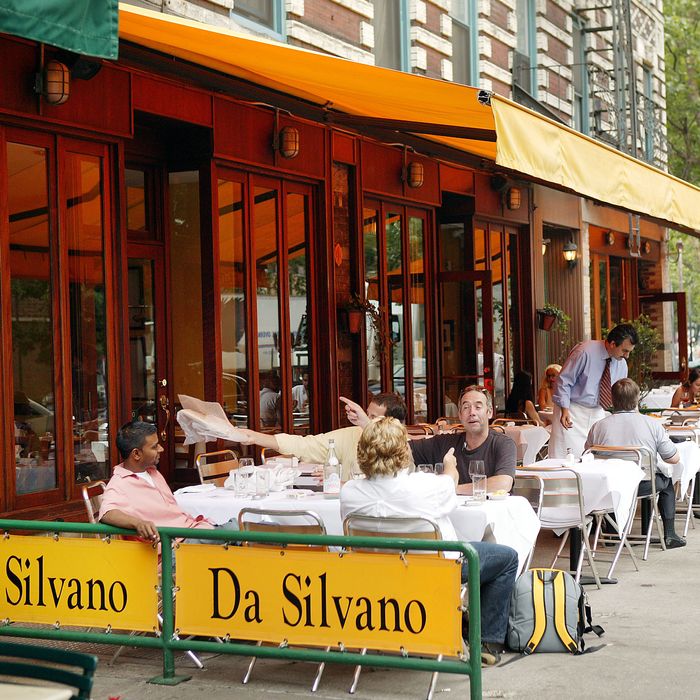 trattoria on
the edge of
Greenwich Village and SoHo named Da Silvano, and
another Tuscan, Pino Luongo,
who had been a manager at Da Silvano, opened his
own place, Il Cantinori, on
West 10th Street.
Acclaimed by the New
York food press, the two trattorias began to
attract the city’s art and fashion
crowds. Da
Silvano, in particular, had
to grow fast, expanding to two rooms so as to
always have tables for Hollywood
and Broadway actors, Andy Warhol’s people and
editors from Condé Nast and
Hearst, who had to take limos downtown to eat at
Da Silvano and Il Cantinori.
trattoria on
the edge of
Greenwich Village and SoHo named Da Silvano, and
another Tuscan, Pino Luongo,
who had been a manager at Da Silvano, opened his
own place, Il Cantinori, on
West 10th Street.
Acclaimed by the New
York food press, the two trattorias began to
attract the city’s art and fashion
crowds. Da
Silvano, in particular, had
to grow fast, expanding to two rooms so as to
always have tables for Hollywood
and Broadway actors, Andy Warhol’s people and
editors from Condé Nast and
Hearst, who had to take limos downtown to eat at
Da Silvano and Il Cantinori.
Those two restaurants set
the decorous tone for “trats” that Nicola was
aiming at, a look that was
definitely different from the restaurants in
Belmont, which toed an established
line that ran to red checkered tablecloths,
badly painted murals of the Bay of
Naples, Roman statuary downsized to fit into an
archway, and family photos
dotting the room.
Detail by detail Tony’s
dream restaurant took shape, but he’d fallen out
of love with naming it
Trattoria Santini, which sounded too
traditional.
He’d gone through scores of names trying
to
get just the right sound. “Tony’s”
was
too old fashioned;
Vasto too unfamiliar;
La Trattoria too obvious. But he
had
time to think about it.
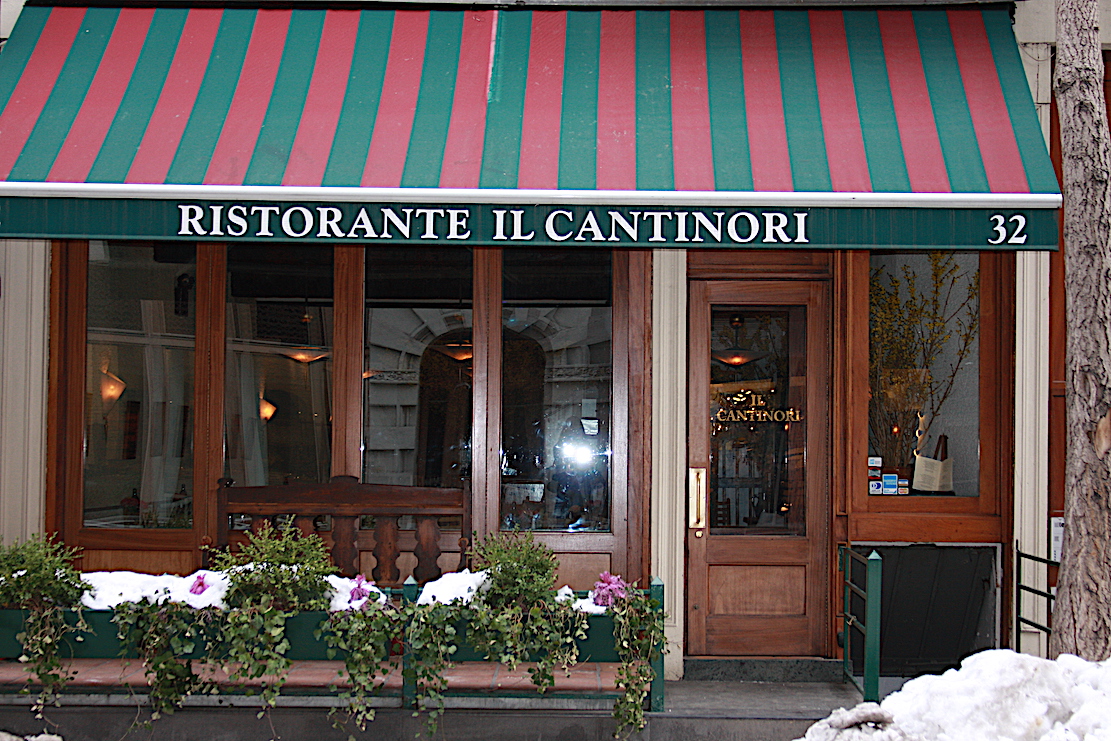 Meanwhile, Nicola
had kept
her toe in the modeling world by happily
agreeing to pose for the second issue
of Willi,
which would be less
aggressively thematic than the first but still
edgy, with a mix of street and
high end fashion throughout. Elena
wanted Nicola for the feature fashion article in
the middle of the magazine, which
only took a day to shoot, this time outside The
Guggenheim Museum on Fifth
Avenue.
Meanwhile, Nicola
had kept
her toe in the modeling world by happily
agreeing to pose for the second issue
of Willi,
which would be less
aggressively thematic than the first but still
edgy, with a mix of street and
high end fashion throughout. Elena
wanted Nicola for the feature fashion article in
the middle of the magazine, which
only took a day to shoot, this time outside The
Guggenheim Museum on Fifth
Avenue.
While there, during the
long set-ups, Elena thought to ask Nicola if
she’d signed with an agency.
Nicola said no, she really hadn't given it much
thought.
“You’ve
gotta go with an agency, Nikki,”
Elena said. “I mean, I’ll use you whenever I
can—and I’d get away without
paying the agency a commission. But,
if
I did, all the agencies would gang up and refuse
to allow me to work with their
models, and I can't afford that. So, listen,
here’s a card for a new place,
SNAP. It’s
owned by a young guy who’s
hungry and needs out of the ordinary girls.
He comes from money and he watches his
girls like a brother. He
watches out for them, keeps them away from
the trash and the druggies and all the rest of
the scuzz in this industry.”
By then the Sodom and
Gomorrah orgies of the Studio 54 disco era had
passed, but the fashion
industry, inextricably engaged with the
entertainment business, was still
fueled by drugs and lechery, just as it had
become among the hangers-on from
Wall Street.
Nicola took the card and
read it, then said, “Y’know what? I
think this agency called me in Milan and wanted
to sign me. And I said I’d
think about it.”
“That’s great,” Elena
said. “Then
they know you and already
want you. I’ll call them first.”
“Thanks, Elena, but, I
just can’t become a full-time model right now.
I don’t have the time and, frankly, I
don’t have the inclination.”
Elena rolled her e yes
and
said, “Honey, what you’ve got is the look,
and you can make more money part-time with that
look than ninety-nine percent
of the struggling models out there will ever
make in a full-time career. Listen,
I want to use you every month—till I
get tired of you and dump you on the heap—just
kidding—so you’ve got this
gig. But
I can’t do that if you’re not
signed with an agency. So, if nothing else, do
it for me.”
yes
and
said, “Honey, what you’ve got is the look,
and you can make more money part-time with that
look than ninety-nine percent
of the struggling models out there will ever
make in a full-time career. Listen,
I want to use you every month—till I
get tired of you and dump you on the heap—just
kidding—so you’ve got this
gig. But
I can’t do that if you’re not
signed with an agency. So, if nothing else, do
it for me.”
Nicola thought that was a
perfectly sensible solution to her problem and
said she’d be happy to sign with
SNAP, if they still wanted her.
And they most certainly
did. The agency’s owner and president, Steven
Holtz, told Nicola, “My God, I
thought I’d lost you! You never called me back. Well,
I’m glad I have you and
first things I’d like to do is to get you
photographed and put together a book
for you.”
Nicola mentioned that
she’d already done one shoot for Willi,
and Steven said, “Elena’s terrific—she called me
about you, y’know—but she’s
not going to give me any prints before the first
issue of Willi comes out in August. So,
we’ll have one of my best
photographers shoot you. Let’s see, when can you
come in for a whole day?”
The two of them discussed
her schedule and with a handshake the deal was
informally sealed.
Three days later Nicola
went to the photographer’s studio in a loft not
far from Willi’s offices. The
photographer, who was British and named Ronnie,
received her cordially, asked
if she liked some water or tea, and got to work.
With music blasting
away—Wham, Madonna, Hall and Oates—and lights
constantly being shifted, he
worked at a furious pace, snapping through a
roll of film, putting out his hand
to receive another camera from an assistant,
lying on the floor looking up,
getting on a chair looking down, and, as Nicola
posed, he kept up the fashion
photographer’s annoying mantra: “Fabulous!
Sensational!
All right, work
with me! Sell it to me! Make every woman
who sees this want to look exactly
like you!”
Nicola found none of it
amusing or even particularly helpful, but her
own natural beauty seemed to
please her Pygmalion. When
it was all
over, Ronnie dropped the act, thanked Nicola
very much and said he’d send the
photos over to Steven by Monday. And that was
that.
By Monday afternoon,
Steven was on the phone with Nicola, raving
about the photos, then said, “When
do you want to start to work?”
Nicola said she wasn’t
sure and that she didn't want to compromise
Elena’s first issue by appearing in
other magazines. Steven said, “Not to worry. If
a magazine used you tomorrow,
their next issue wouldn't be out till November
at the earliest.
So that’s not a problem. What’s
your schedule like?”
Nicola said that aside
from the classes she was taking at Columbia, she
was pretty free.
“Fabulous,” Steven said. “Okay, I’m
sending the contract over to you
today by messenger. Have
your lawyer
look it over, sign it, and let’s get to work.”
By John Mariani
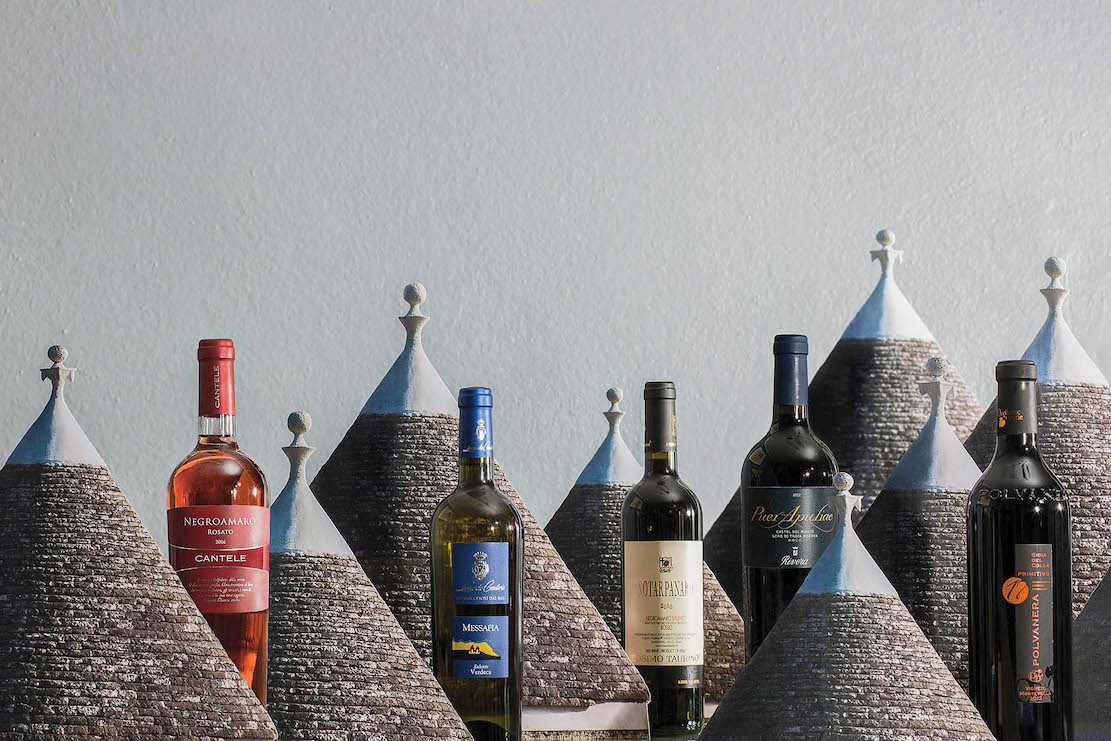
Nowhere
on earth are natural beauty, food,
and wine so intimately entwined as in Italy, and
the soaring interest in that
delicious trinity finds full flourish in Puglia,
where valleys of vineyards,
hillsides of olive trees, fields of wheat, and
seas teeming with life conspire
with ancient traditions to make the region
irresistible to gourmets and
connoisseurs.
Yet it has become clear in the past decade
that Puglia, in the
southeastern part of
the country (including the “heel” of Italy’s
“boot”) is also now in the
vanguard of innovation in viticulture, while
vigilantly based on historic
traditions. Today
Puglia produces 32
wines in the DOC appellation and four DOCGs, with
new IGT wines coming out all
the time.
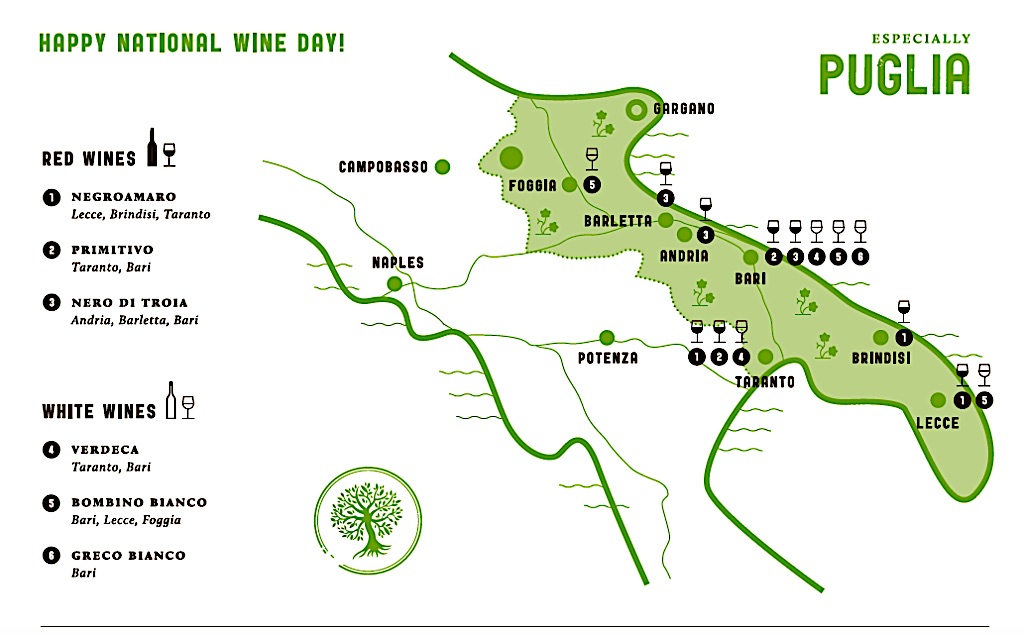 Varietals like Negroamaro,
Bombino Bianco,
Gravina, and Primitivo, once unfamiliar in the
global wine market, are now
celebrated for their distinctiveness, while wines
like Salice Salentino, Rosso
di Cerignola, and “Five Roses” are found in
restaurants and wine stores
throughout Europe and the U.S.
Varietals like Negroamaro,
Bombino Bianco,
Gravina, and Primitivo, once unfamiliar in the
global wine market, are now
celebrated for their distinctiveness, while wines
like Salice Salentino, Rosso
di Cerignola, and “Five Roses” are found in
restaurants and wine stores
throughout Europe and the U.S.
Wisely,
Puglian producers have also kept
their very best wines priced at a level all
consumers can afford. Puglia
has been able to capitalize on
Primitivo (below) as being the same
varietal as America’s popular Zinfandel (both
originating in Croatia), but instead of wholly
commercial styles like sweet
“white Zinfandel” or high-alcohol “blockbusters,”
Puglian Primitivos are
softer, with a fine balance of fruit and acid,
easy to drink young with a wide
variety of foods.
The technology of Puglian winemaking is as
modern as anywhere in Europe, with minimum use of
chemicals, optimum use of
production methods and reduction of waste. Indeed, Puglia
is the second largest producer (after Sicily) of
organic wines.
The manifest success of Puglian wines is
clear in its bottling and export figures: while
Southern Italy exports only 6%
of its production, 90% of Puglia’s fast growing
number of bottled wines is sold
outside Italy.
This broad presence
in the global market
has made agro-tourism a major industry in Puglia. Visitors
now flock to Foggia in the Daunia
mountains, surrounded by vast wheat fields and
vineyards. The region of Murgia
winds down to the Adriatic, with dramatic sweeps
of nature that create
different microclimates that define the terroirs
of the vineyards and olive
groves.
There
the prodigious Nero di Troia grape is
the basis for three Castel del Monte DOC wines,
Rosso Canosa and Rosso di
Barletta, while fragrant white varietals like
Malvasia del Chianti, Greco and
Bianco d’Alessano go into Gravina.
Murgia is also the principal stronghold of
Primitivo, planted there for
three centuries.
The so-called “Itria Valley Triangle” that
embraces the
provinces of Bari, Brindisi
and Taranto is famous for the conical-shaped
limestone trulli houses as well as for DOC
wines like Martina
and Locorotondo, made principally
from white Verdeca and Bianco d’Alessano grapes. Outside
the “white city” of Ostuni, two
indigenous grape varieties, Ottavianello and
Sussumaniello, are now being made
in artisanal style and achieving a unique renown
of their own.
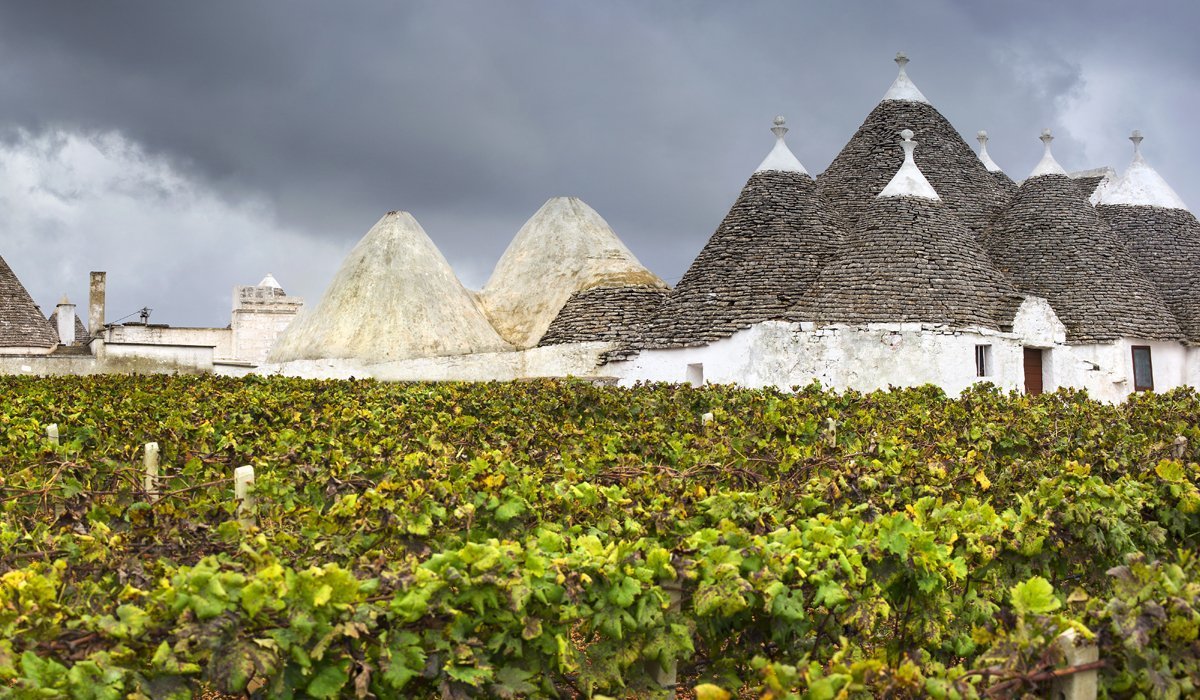 Messapia is now famous for the
richness
of its Primitivo wines and is
increasingly being planted with international
varietals like Chardonnay and
Cabernet Sauvignon that show great promise.
The regions within Salento is the domain of
the finest Negroamaro, whose
translation “black bitter” is certainly outdated,
for wines made from it, like
Salice Salentino, are now fresh, complex red wines
of distinction.
Messapia is now famous for the
richness
of its Primitivo wines and is
increasingly being planted with international
varietals like Chardonnay and
Cabernet Sauvignon that show great promise.
The regions within Salento is the domain of
the finest Negroamaro, whose
translation “black bitter” is certainly outdated,
for wines made from it, like
Salice Salentino, are now fresh, complex red wines
of distinction.
While it is obvious that the sale and
promotion of wines in the world market has gotten
tougher and tougher, owing to
both recession and sheer volume, the leaps forward
that Puglian wines have made
in technology, organic commitment, and saleability
has gone against the
currents by virtue of a quality that was not even
possible twenty years
ago. Italy
is justifiably proud of its
finest wines, and Puglia is fast achieving a
reputation among them.
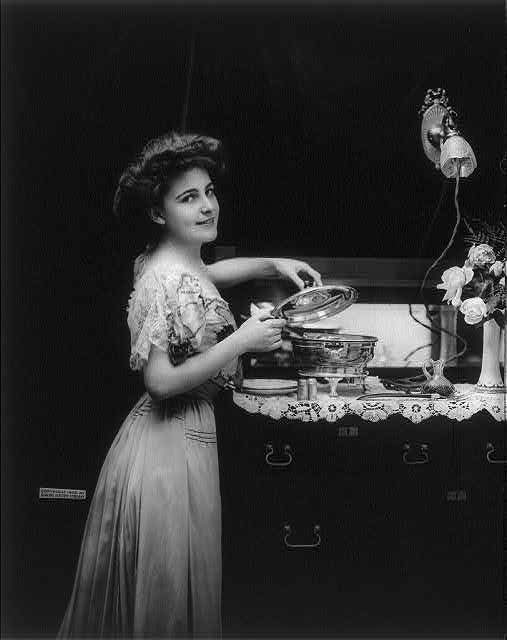
MOST FASCINATING ARTICLE TITLE OF THE MONTH
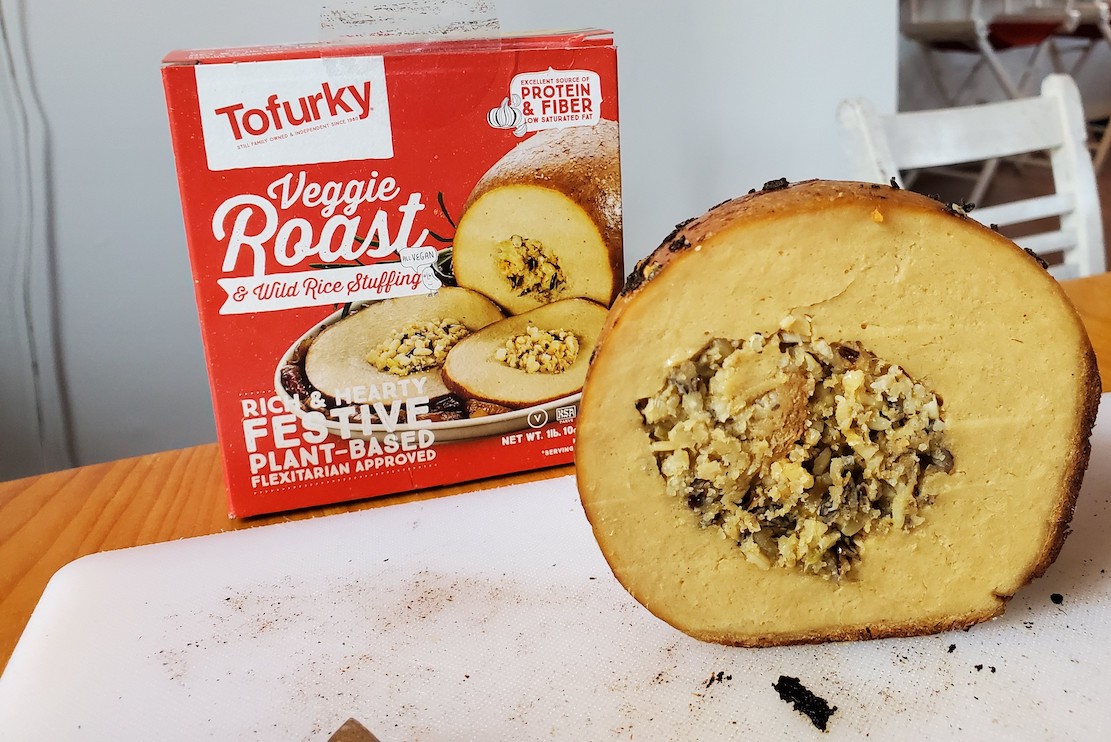
"GEE WHIZ, WHO NEEDS TURKEY?" ARTICLE
"16
Festive Thanksgiving Mains That Aren’t Turkey: You
might be skipping turkey this year because
it’s too big or just too much work. We’ve got
options to get excited about."—Alexa Weibel, NY
Times (11/17/20)
Sponsored by

Any of John Mariani's books below may be ordered from amazon.com.
 The Hound in Heaven
(21st Century Lion Books) is a novella, and
for anyone who loves dogs, Christmas, romance,
inspiration, even the supernatural, I hope you'll find
this to be a treasured favorite. The story
concerns how, after a New England teacher, his wife and
their two daughters adopt a stray puppy found in their
barn in northern Maine, their lives seem full of promise.
But when tragedy strikes, their wonderful dog Lazarus and
the spirit of Christmas are the only things that may bring
his master back from the edge of despair.
The Hound in Heaven
(21st Century Lion Books) is a novella, and
for anyone who loves dogs, Christmas, romance,
inspiration, even the supernatural, I hope you'll find
this to be a treasured favorite. The story
concerns how, after a New England teacher, his wife and
their two daughters adopt a stray puppy found in their
barn in northern Maine, their lives seem full of promise.
But when tragedy strikes, their wonderful dog Lazarus and
the spirit of Christmas are the only things that may bring
his master back from the edge of despair. WATCH THE VIDEO!
“What a huge surprise turn this story took! I was completely stunned! I truly enjoyed this book and its message.” – Actress Ali MacGraw
“He had me at Page One. The amount of heart, human insight, soul searching, and deft literary strength that John Mariani pours into this airtight novella is vertigo-inducing. Perhaps ‘wow’ would be the best comment.” – James Dalessandro, author of Bohemian Heart and 1906.
“John Mariani’s Hound in Heaven starts with a well-painted portrayal of an American family, along with the requisite dog. A surprise event flips the action of the novel and captures us for a voyage leading to a hopeful and heart-warming message. A page turning, one sitting read, it’s the perfect antidote for the winter and promotion of holiday celebration.” – Ann Pearlman, author of The Christmas Cookie Club and A Gift for my Sister.
“John Mariani’s concise, achingly beautiful novella pulls a literary rabbit out of a hat – a mash-up of the cosmic and the intimate, the tragic and the heart-warming – a Christmas tale for all ages, and all faiths. Read it to your children, read it to yourself… but read it. Early and often. Highly recommended.” – Jay Bonansinga, New York Times bestselling author of Pinkerton’s War, The Sinking of The Eastland, and The Walking Dead: The Road To Woodbury.
“Amazing things happen when you open your heart to an animal. The Hound in Heaven delivers a powerful story of healing that is forged in the spiritual relationship between a man and his best friend. The book brings a message of hope that can enrich our images of family, love, and loss.” – Dr. Barbara Royal, author of The Royal Treatment.
 |
The Encyclopedia of American Food and Drink by John F. Mariani (Bloomsbury USA, $35) Modesty forbids me to praise my own new book, but let me proudly say that it is an extensive revision of the 4th edition that appeared more than a decade ago, before locavores, molecular cuisine, modernist cuisine, the Food Network and so much more, now included. Word origins have been completely updated, as have per capita consumption and production stats. Most important, for the first time since publication in the 1980s, the book includes more than 100 biographies of Americans who have changed the way we cook, eat and drink -- from Fannie Farmer and Julia Child to Robert Mondavi and Thomas Keller. "This book is amazing! It has entries for everything from `abalone' to `zwieback,' plus more than 500 recipes for classic American dishes and drinks."--Devra First, The Boston Globe. "Much needed in any kitchen library."--Bon Appetit. |
"Eating Italian will never be the same after reading John Mariani's entertaining and savory gastronomical history of the cuisine of Italy and how it won over appetites worldwide. . . . This book is such a tasteful narrative that it will literally make you hungry for Italian food and arouse your appetite for gastronomical history."--Don Oldenburg, USA Today. "Italian
restaurants--some good, some glitzy--far
outnumber their French rivals. Many of
these establishments are zestfully described
in How Italian Food Conquered the World, an
entertaining and fact-filled chronicle by
food-and-wine correspondent John F.
Mariani."--Aram Bakshian Jr., Wall Street
Journal.
"Equal parts
history, sociology, gastronomy, and just
plain fun, How Italian Food Conquered the
World tells the captivating and delicious
story of the (let's face it) everybody's
favorite cuisine with clarity, verve and
more than one surprise."--Colman Andrews,
editorial director of The Daily
Meal.com. "A fantastic and fascinating
read, covering everything from the influence
of Venice's spice trade to the impact of
Italian immigrants in America and the
evolution of alta cucina. This book will
serve as a terrific resource to anyone
interested in the real story of Italian
food."--Mary Ann Esposito, host of PBS-TV's
Ciao
Italia. "John Mariani has written the
definitive history of how Italians won their
way into our hearts, minds, and
stomachs. It's a story of pleasure over
pomp and taste over technique."--Danny Meyer,
owner of NYC restaurants Union Square
Cafe, The Modern, and Maialino.
|
 |
 |
 |
 |
 |
 |
 |
 |
 Everett Potter's Travel Report:
Everett Potter's Travel Report: 
 Eating Las
Vegas JOHN CURTAS has been covering
the Las Vegas food and restaurant scene
since 1995. He is the co-author of EATING LAS
VEGAS – The 50 Essential Restaurants (as
well as the author of the Eating Las
Vegas web site: www.eatinglasvegas.
He can also be seen every Friday morning as
the “resident foodie” for Wake Up With the
Wagners on KSNV TV (NBC) Channel 3 in
Las Vegas.
Eating Las
Vegas JOHN CURTAS has been covering
the Las Vegas food and restaurant scene
since 1995. He is the co-author of EATING LAS
VEGAS – The 50 Essential Restaurants (as
well as the author of the Eating Las
Vegas web site: www.eatinglasvegas.
He can also be seen every Friday morning as
the “resident foodie” for Wake Up With the
Wagners on KSNV TV (NBC) Channel 3 in
Las Vegas.
MARIANI'S VIRTUAL GOURMET
NEWSLETTER is published weekly. Publisher: John Mariani. Editor: Walter Bagley. Contributing Writers: Christopher Mariani,
Robert Mariani, Misha Mariani, John A. Curtas, Gerry Dawes, Geoff Kalish,
and Brian Freedman. Contributing
Photographer: Galina Dargery. Technical
Advisor: Gerry
McLoughlin.
If you wish to subscribe to this
newsletter, please click here: http://www.johnmariani.com/subscribe/index.html
© copyright John Mariani 2020
